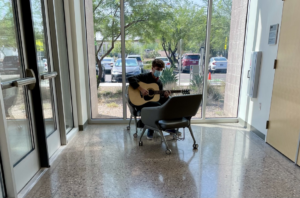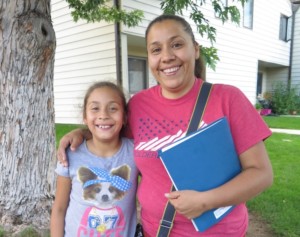The Benefits of Creative Learning Spaces in K-12 schools

By: Brian Bulmer
As technology and innovation become the first priority for school districts, it’s important that students are offered creative learning spaces to expand and challenge their knowledge and ability to create. Technology can help students boost their concentration, retain information and encourage individualized learning programs. Students can also begin to advance their collaboration skills through online projects.
In the 2017 National Education Technology Plan Update, former U.S. Secretary of Education John King stated “one of the most important aspects of technology in education is its ability to level the field of opportunity for students.” With technology in tow, creative learning spaces help to expand students’ minds to imagination and freedom of expression. These unique, educational spaces breed continued motivation for students that allow children to fully engage in their schooling and become excited about learning. However, providing a creative learning space is more than just updating classroom technology, Learning Experience Designer Lynn Marentette explains a successful, creative learning space should include the following characteristics:
- Flexible space that can be easily adjusted to meet support the learning activities
- Allow for movement
- Allow for various groupings
- Allow for hands-on exploring, making, and building
- Allow for curriculum integration, including the arts
- Support social interaction and development
- Support cognitive skills and development
- Support the integration of technology
- Provide opportunities for students to learn through examples
So, with the right aesthetics, a creative learning space cannot only impact brain function but positively influence how students feel at school and cultivate an environment that will support students’ success.
 Top technology Tools for Students to Think Critically
Top technology Tools for Students to Think Critically
Creative learning spaces house advanced technology such as interactive Promethean boards, 3D printers, audio/visual production, a computer programming lab and more technologies that help students develop better computer, problem-solving and design thinking skills.
With new technology, students can grow in a multitude of Science, Technology, Engineering, the Arts and Mathematics (STEAM) classes. In fact, the STEAM framework itself has proved to be a critical component to elementary education that better prepares students’ for future careers, especially since the United States is expecting to see more than 3 million job openings in the STEM-related fields in 2018.
These spaces also give young learners the opportunity to research and participate in classes related to computer science, robotics, physics and more with easier access to the latest technology – all in one location.
Technology used in the field of education allows more hands-on learning that presents the opportunity to explain topics that are too difficult to detail verbally to a student. From elementary to high school, all grades are able to leverage and benefit from these spaces whether for class-driven instruction, group-based assignments or individual learning.
Collaboration Centers
Collaboration is crucial in all aspects of the education system. Teacher, parent, administration and student collaboration are the key to success. Group projects in an open space such as a collaboration center allow students to improve their social and interpersonal skills with their peers. Working well with a team and communicating effectively are all abilities collaborating students will acquire.
Collaboration centers maximize the educational experience. K-12 students can convene in the collaboration center and improve upon their communication skills. Each grade will be given the tools to think critically in this ever-changing educational environment. Attaining these skills early in life will lead to a greater amount of success when they begin to enter the workforce. In fact, the ability to collaborate with others has become one of the most sought-after skills in both education and the workplace. A survey by the Association of American Colleges and Universities found that more than 80 percent of midsize or larger employers look for collaboration skills in new hires.
Involving Industry Partners
In alignment with the school district’s curriculum, creative learning spaces can also offer students unique opportunities to work with local industry partners one-on-one to gain knowledge and experience that correlates with the student’s desired career pathway. The innovative space opens the door to industry-based learning opportunities that will serve as a liaison space between school and industry, giving students direct access to industry experts who can help evolve their critical thinking with real-world experiences While students may learn some employability and technical skills in the classroom, many can benefit from an employer’s first-hand insight before they enter the workforce.
Involving the community and partners in the community can provide invaluable experience to students, and encourages young learners to continue their studies outside of the classroom. Additionally, these experiences can also introduce students to alternative post-graduation paths, including coding academies, direct hire programs and more that better align with the student’s desired future journey.
Curriculum standards have been raised and now reflect what young learners must know as they become adults in an increasingly complex and technological society. Today, in the 21st century, the aesthetics of learning spaces greatly impact brain function and influence how students feel when they’re in school – as well as how they perform. By offering innovative, engaging and collaborative learning spaces, school districts and educators are improving and expanding critical hard and soft skill sets amongst students while better positioning students for future success in any endeavor they choose to pursue.
For more, see:
- How $5 Billion Could Provide a Great Education for Every Kid on Earth
- Contribution: Schools Alive with Possibility
- How a Texas School District Took Personalized Learning from Vision to Reality
Brian Bulmer is the director of the Innovation Hub and work-based learning at MSD of Decatur Township. You can find Brian on Twitter at @Mr_BrianBulmer.
Stay in-the-know with innovations in learning by signing up for the weekly Smart Update.






david
Thanks for sharing good information
Shammy Peterson
It was nice that you pointed out that students will feel cultivated and comfortable when you consider a creative learning space. As you said, the brain can positively influence the students' function. This is something that the management of the schools can consider in order to better teach their students. I could imagine how WW1 map activities that are interactive could boost the thinking skills of all the students. https://historysimulation.com/world-war-1-map-activity/